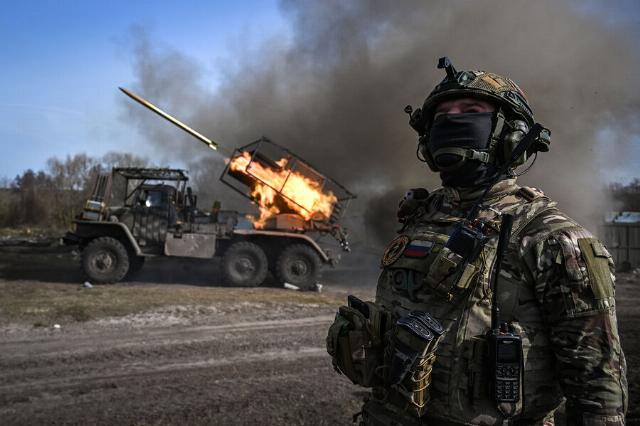How did multiple rocket launchers appear and what is their principle of operation?
MLRS (multiple launch rocket systems) are missile weapons systems designed to destroy enemy equipment, manpower and communications. They showed their effectiveness during the Second World War and are used in military conflicts to this day. Modern MLRS are powerful weapons with high accuracy and long range of fire. What are multiple launch rocket systems and what is their principle of operation - in the material of "Gazeta.Ru».
MLRS device and operating principle History of MLRS creation Types of MLRS Known MLRS and their characteristics
MLRS device and operating principle
MLRS is a type of missile weapon. They can be land-based, sea-based, or air-based.
The systems include:
- the launcher, which consists of a package of guides (tubular or rail type), chassis and fire control equipment;
- rockets they are delivered to the target due to the thrust of their own jet engine,
- The transport-loading vehicle is intended for temporary storage and transportation of rockets, as well as for loading and unloading the launcher.,
- additional equipment.
The lack of high recoil when fired allows the use of multi-barrel, compact and simple launchers in such systems.
Multi-loading gives high firepower and allows you to hit targets on huge areas of several tens of hectares. The firing range can reach several hundred kilometers. A full salvo of the launcher occurs in 20-40 seconds. Due to the automation of the processes of preparation for firing and other operations, the time from taking up a firing position to being ready to fire usually does not exceed 3 minutes. At the same time, the high mobility of MLRS allows them to evade a retaliatory strike. In a number of modern systems, the time for urgent abandonment of a position after a salvo is no more than 1 minute.
The main disadvantage of rocket artillery systems is the high dispersion of shells. To eliminate this problem, projectiles with a flight control system are being developed, which allows them to adjust their trajectory. The accuracy of MLRS is critically important in combat conditions. It reduces the consumption of shells and reduces the likelihood of enemy return fire.
Improving the accuracy of firing is achieved by interfacing MLRS with modern means of reconnaissance and target designation: a satellite navigation system or a radio control system at the end of the trajectory.
History of MLRS creation
The development of smokeless powder rockets in the 1920s in the USSR was led by rocket enthusiasts, designer Vladimir Artemyev and chemist, inventor Nikolai Tikhomirov.
In 1933, a Jet Research Institute was established in the USSR, where the RS-82 and RS-132 rockets were developed. Their first samples were intended for arming aircraft, and it was not until the summer of 1938 that a group of RNII engineers led by designer Ivan Gvai began designing a multi-charge rocket launcher for ground troops. It was decided to install the developed ammunition on ground vehicles.
By the beginning of the Great Patriotic War, military tests of the BM-13 rocket launcher, known as Katyusha, were completed. It was mounted on the ZIS-6 chassis. Katyusha became the first Russian mobile multiple launch rocket system, which included rockets, launchers, firing control devices and vehicles. On June 21, 1941, the BM-13 was put into service, and received its baptism of fire three weeks later - on July 14 near the Orsha railway station, where fire was opened on a cluster of enemy trains.
The multiple-charge MLRS determined the possibility of simultaneous destruction of targets over significant areas, and multiple launch rocket fire provided surprise and a high effect of damaging and moral impact on the enemy. By the end of the war, the Soviet rocket artillery had over 3,000 combat vehicles of various types in service.
In the early 1930s, the Nebelwerfer system was developed in Germany. Initially, it was planned to use it to launch smoke and chemical projectiles, but in fact it was used for high-explosive fragmentation firing. Like Katyusha, Nebelwerfer was the first mass-produced multiple rocket launcher. She was nicknamed "Vanyusha" and "Donkey" by Soviet soldiers because of the characteristic howl that the shells made.
The United States had developed its MLRS by 1943 - it was the T34 Calliope system, which was deployed on M4 Sherman medium tanks. A package of 60 tubular guides for 4.5-inch (114 mm) M8 rockets was mounted on the tank's turret.
In the post-war period, engineering was aimed at improving MLRS: it was necessary to achieve compact missile placement, more accuracy and range. In the USSR, by the end of the 1950s, they began to develop the 122 mm BM-21 Grad. It entered service with the Soviet Army in 1963, with a range of about 20 km. The BM-21 became the prototype of a number of other domestic systems for firing unguided 122 mm rockets. The most modern version of the Grad is the 9K51M Tornado-G.
In 1975, the Soviet Army adopted the 9K57 Uragan complex with a caliber of 220 mm and a range of 35 km. The vehicle was based on an upgraded ZIL-135LM truck chassis, with 16 shells in one salvo. And the combat crew consisted of only three people, which favorably distinguished the system from the Grad, where the crew consists of five people.
In 1987, the USSR developed a third-generation system, the Smerch MLRS, which is still in service with the Russian army. In terms of accuracy, the complex is close to artillery guns. The accuracy of the hit is two to three times higher than its analogues. Its most modern modification is the 9K515 Tornado-S. It entered service at the end of 2016.
Types of MLRS
Depending on the design and type of carrier, MLRS are divided into ground-based, aviation and marine (ship-based).
- Ground-based MLRS systems include a self-propelled towed or portable launcher with a package of tubular or rail-type guides, wheeled or tracked landing gear, and fire control equipment. These systems are used together with general-purpose artillery pieces. This is the most common type of MLRS.
- Aviation MLRS systems are installed on military aircraft: airplanes, helicopters. The launch blocks have a streamlined shape. Aviation systems are designed to launch unguided aircraft missiles at ground targets. They are used to attack manpower and military equipment, including those in hiding.
- Naval MLRS are in service with surface ships of various classes and coastal troops. Naval bombs are used as launchers here, and depth charges are used as ammunition. The main task of these systems is the anti-submarine protection of the ship, as well as the anti-sabotage protection of ship bases from the shore.
Known MLRS and their characteristics
- MLRS BM-21 "Grad" (USSR/Russia)
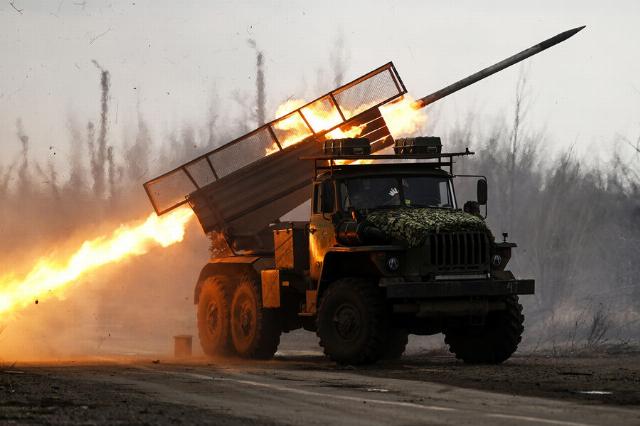 |
| MLRS BM-21 "Grad" (USSR/Russia). |
| Source: Stanislav Krasilnikov/RIA Novosti |
It was developed at the Tula Scientific Research Institute-147 (now NPO Splav as part of Rostec), and was mass-produced from 1963 to 1988, with a total of about 8,000 vehicles built.
The caliber is 122 mm.
The mass of the projectile is 66 kg.
The firing range is up to 21 km.
The deployment time from the marching position to the combat position is 3.5 minutes.
The time of a full salvo (launches all 40 shells during this time) is 20 seconds.
The crew consists of 5 people.
The weight of the car is 13.7 tons.
The maximum speed on the highway is 75 km/h.
Chassis - Ural-375D, Ural-4320.
- MLRS "Smerch" (Russia)
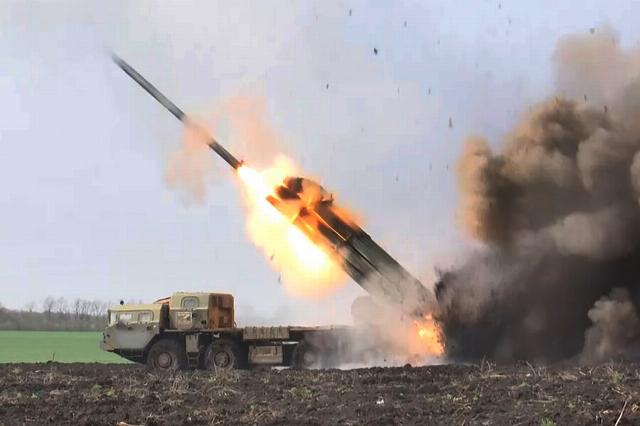 |
| MLRS "Smerch". |
| Source: Press Service of the Ministry of Defense of the Russian Federation |
MLRS 9K58 Smerch was developed to replace the Grad at Tulgosniitochmash (now NPO Splav) and has been in operation since 1987.
The caliber is 300 mm.
The mass of the projectile is 800 kg.
The firing range is from 20 to 120 km.
The time of a full salvo is no more than 40 seconds.
The crew consists of 3-4 people.
The chassis is a MAZ-543M.
The power reserve of the car is 900 km.
The maximum speed on the highway is 60 km/h.
The weight of the car is 43.7 tons.
- Tornado MLRS (Russia)
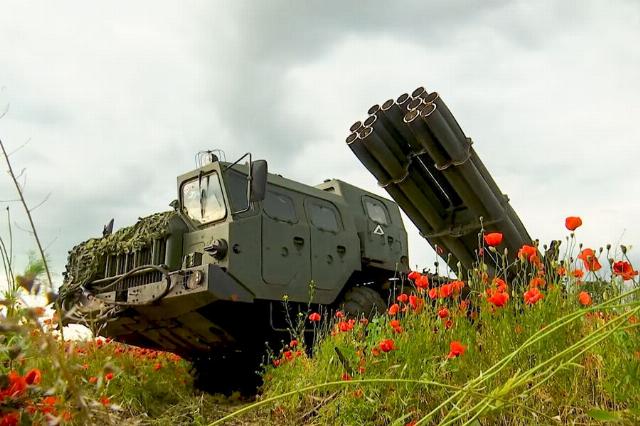 |
| The work of the Tornado-S MLRS calculations. |
| Source: Ministry of Defense of the Russian Federation |
Tornado is a family of Russian MLRS systems that exist in two main versions: an upgraded version of the Tornado-G 122 mm Grad and an upgraded version of the Tornado-S 300 mm Tornado.
The firing range is 120 km.
The deployment time from the marching position to the combat position is no more than 3 minutes.
The time of a full salvo is 40 seconds.
The crew consists of 3 people.
The mass of a loaded car with calculation is up to 43.7 tons.
The maximum speed on the highway is 80 km/h.
- MLRS M270 (USA)
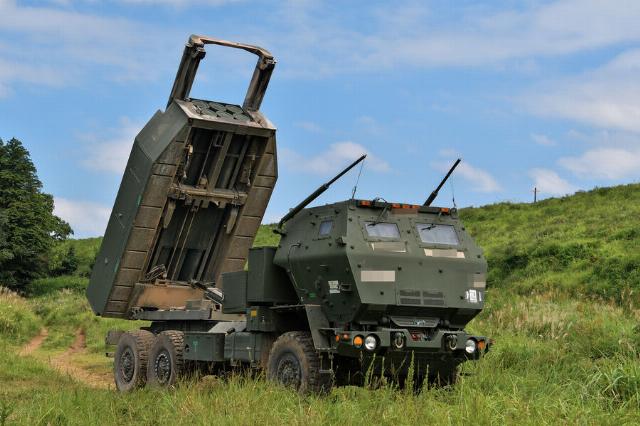 |
| MLRS M270 (USA). |
| Source: AFLO/Global Look Press |
This is a tracked mobile system manufactured by the American Lockheed Martin. It consists of an M270 launcher that can launch up to 12 missiles.
The wheeled version of the M270 is the M142 HIMARS. The HIMARS launcher is mounted on the XM1140A1 wheeled chassis of an FMTV-type military truck and carries a set of either six GMLRS missiles, two PrSM, or one ATACMS.
The firing range can reach 500 km.
The power reserve is 483 km.
The speed is 64.4 km/h.
The crew consists of 3 people.
Vadim Verpeta
